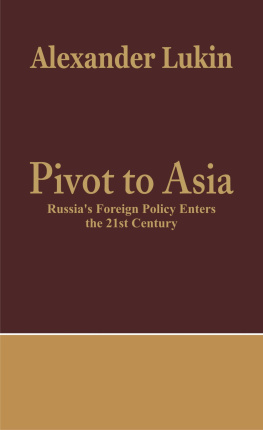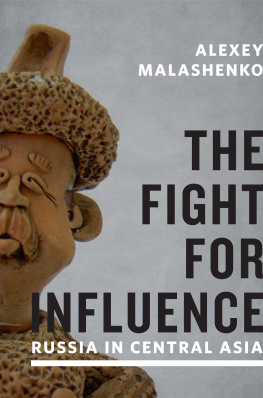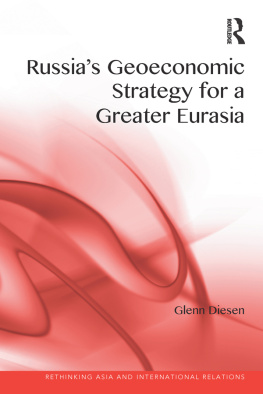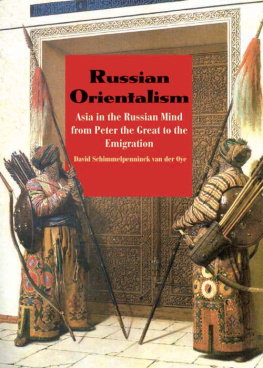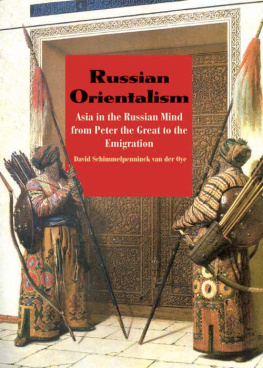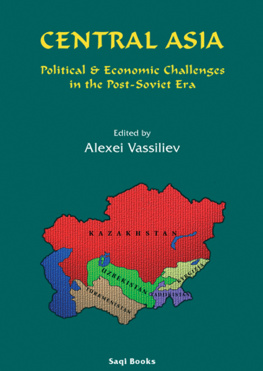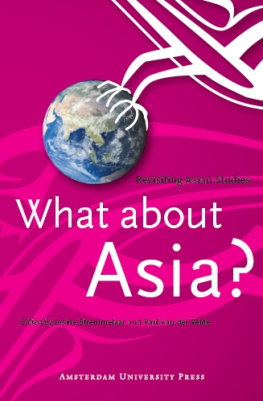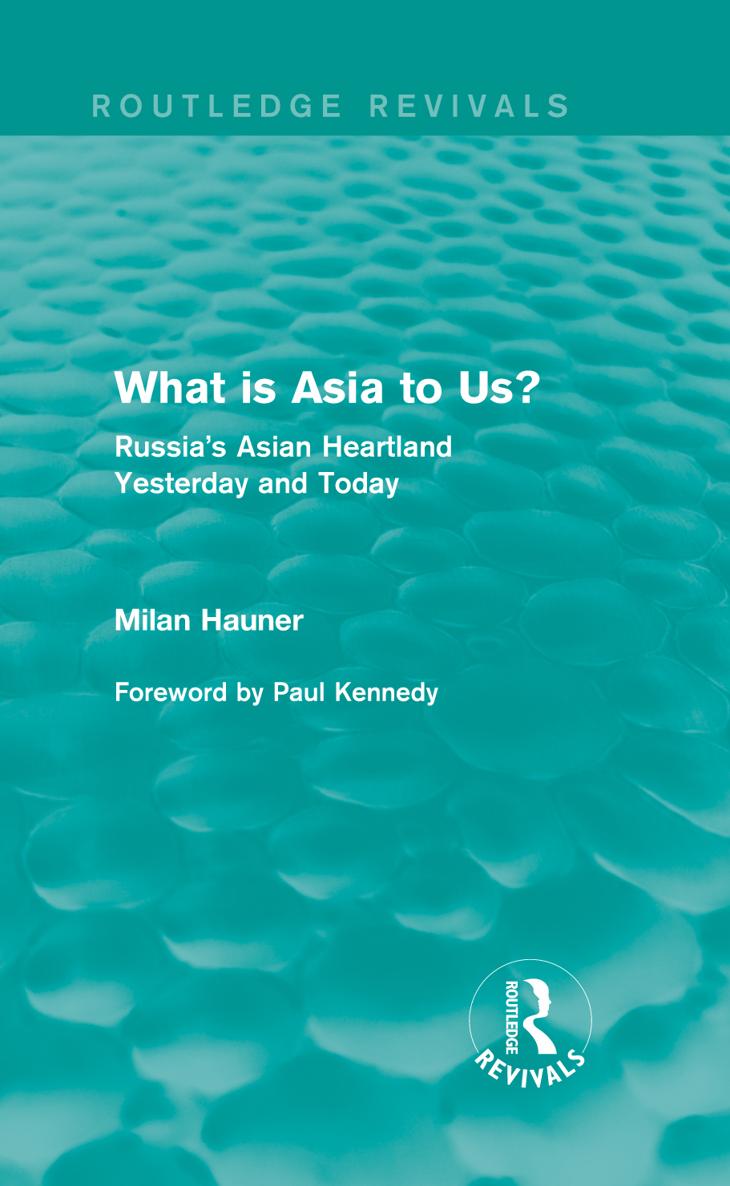Routledge Revivals
What is Asia to Us?
This book, first published in 1990, considers the uneasy relationship between Russia and Soviet Central Asia. Chapters examine both the significance of Asia to the Russian mind and the place that Asia has occupied in Russian geopolitical thinking in the last hundred years, showing that outbreaks of violence are simply a manifestation of a long-standing tension. This is a remarkable and comprehensive study, which will be of great value to those concerned with the history and future of Central Asia and Siberia.
What is Asia to Us?
Russias Asian Heartland Yesterday and Today
Milan Hauner
First published 1990
by Unwin Hyman Inc.
First published in paperback 1992
by Routledge
This edition first published in 2013 by Routledge
2 Park Square, Milton Park, Abingdon, Oxon, OX14 4RN
Simultaneously published in the USA and Canada
by Routledge
711 Third Avenue, New York, NY 10017
Routledge is an imprint of the Taylor & Francis Group, an informa business
1990 Milan Hauner
All rights reserved. No part of this book may be reprinted or reproduced or utilised in any form or by any electronic, mechanical, or other means, now known or hereafter invented, including photocopying and recording, or in any information storage or retrieval system, without permission in writing from the publishers.
Publishers Note
The publisher has gone to great lengths to ensure the quality of this reprint but points out that some imperfections in the original copies may be apparent.
Disclaimer
The publisher has made every effort to trace copyright holders and welcomes correspondence from those they have been unable to contact.
A Library of Congress record exists under LC control number: 89038333
ISBN 13: 978-0-415-85835-9 (hbk)
ISBN 13: 978-0-203-79547-7 (ebk)
WHAT IS ASIA TO US?
Russias Asian Heartland Yesterday and Today
MILAN HAUNER
London and New York
First published 1990 by Unwin Hyman, Inc.
First published in paperback 1992
by Routledge
11 New Fetter Lane, London EC4P 4EE
Simultaneously published in the USA and Canada
by Routledge
a division of Routledge, Chapman and Hall, Inc.
29 West 35th Street, New York, NY 10001
1990 Unwin Hyman
1992 Routledge
All rights resewed. No part of this book may be reprinted or reproduced or utilized in any form or by any electronic, mechanical, or other means, now known or hereafter invented, including photocopying and recording, or in any information storage or retrieval system, without permission in writing from the publishers.
Library of Congress Cataloging in Publication Data
Hauner, Milan
What is Asia to us?: Russias Asian heartland yesterday and today Milan Hauner.
p. cm.
Includes bibliographical references.
ISBN 0415081092
1. GeopoliticsSoviet Union. 2. Eastern question (Far East) 3. Soviet UnionHistorical Geography. 4. Soviet Far East (R.S.F.S.R.)Historical geography. 5. Soviet Central AsiaHistorical geography. 6. Mackinder, Halford John, Sir, 18611947.
I. Title
DK46.H38 1990
947dc20
8938333
CIP
British Library Cataloguing in Publication Data
Hauner, Milan
What is Asia to us?: Russias Asian heartland yesterday and today.
1. Asiatic Soviet Union, history
I. Title
ISBN 0415081092
Typeset in 10 on 12 point Garamond by Fotographics (Bedford) Ltd and printed in Great Britain by Billing & Sons Ltd, London and Worcester
Contents
Figures
Railroad Map of Central Asia before World War I
Railroad Map of Central Asia Today
Modifications of Mackinders Heartland Russia of 1904, 1919 and 1943
Mackinders Map of Future Railways in Eurasia (1919)
Mendeleevs and Semyonovs Vision of the Russian Eurasian Empire from Sea to Sea
Haushofers Transcontinental Bloc and the Partition of Eurasia between Germany and Japan (1942)
Variations on the Heartland Theme
Table
Deployment of Soviet Armed Forces 1986
As I am writing these lines, extraordinary changes are taking place in the Soviet Union. I therefore dedicate this book to Soviet citizens of all nationalities, who may find this collection of three essays a stimulating contribution to the critical thinking about the recent past, the present, and the future of Soviet Eurasia. They alone should decide how their Empire should be best reconstructed for their own benefit, that of their immediate neighbors, and of humanity at large.
I am grateful to my colleagues and other specialists, Richard Hartshorne, of UWMadison; to the late Michael Petrovich, and to Mike Harpke and Mark Bassin, all of the same university; to Ladis Kristof, of Portland State University; to Bob Canfield, of Washington University at St. Louis; to Paul Kennedy, of Yale University; and to Henry Shapiro, for many years the UPI Bureau chief in Moscow, for having read various parts of the manuscript and for offering valuable suggestions.
I wish to express my gratitude to the UWMadison publication grant, which enabled me, with the cooperation of Onno Brouwer, head of the Cartography Lab, to prepare the maps included in this book.
A word of warm appreciation is extended to Mrs. Judith Prestigiacomo for typing the final version of the manuscript, and to Lisa Freeman and Lauren Osborne of Unwin Hyman, for supervising the editing of this book.
Last but not least, I thank my family for their extraordinary patience and for their tolerance of my eccentric preoccupation with Russian and Soviet Eurasia, the largest land mass on our planet.
Madison: June 1989
Milan Hauner
At the end of our present century, just as at its beginning, the world is anxiously wondering about the future of the Russian Empire. By far the biggest country in territorial extent, containing massive natural resources, possessing the largest armed forces on the globe, Russias sheer weight has always made it an enormously important factor in international politics. What it doesor what it chooses not to dohas serious implications for all its neighbors, from Eastern Europe to Iran, from the Black Sea to the Pacific Ocean.
Eighty or ninety years ago, the chief concern of foreign observersand the chief hope of Russian imperialistswas the further landward expansion of the Tsarist colossus into the Near East, into Central Asia, into China, and into the Far East. Russia, along with the United States (and, possibly, Germany), was regarded as one of the worlds rising Great Powers, as distinct from the relatively declining Powers of the traditional European states-system. Its swift population growth, its rapid pace of industrialization, the development of an extensive railway network, all pointed to the countrys growing prospects. Just how much further Russia might rise, and how it would employ its growing power and influence, troubled statesmen from London to Tokyo. But that it would rise was taken for granted. A turn-of-the-century pundit, returning to this earth in (say) 1945 or 1980, might be astonished at the change of regime in Moscow; but he probably would not be surprised at Russias expanded power position.


